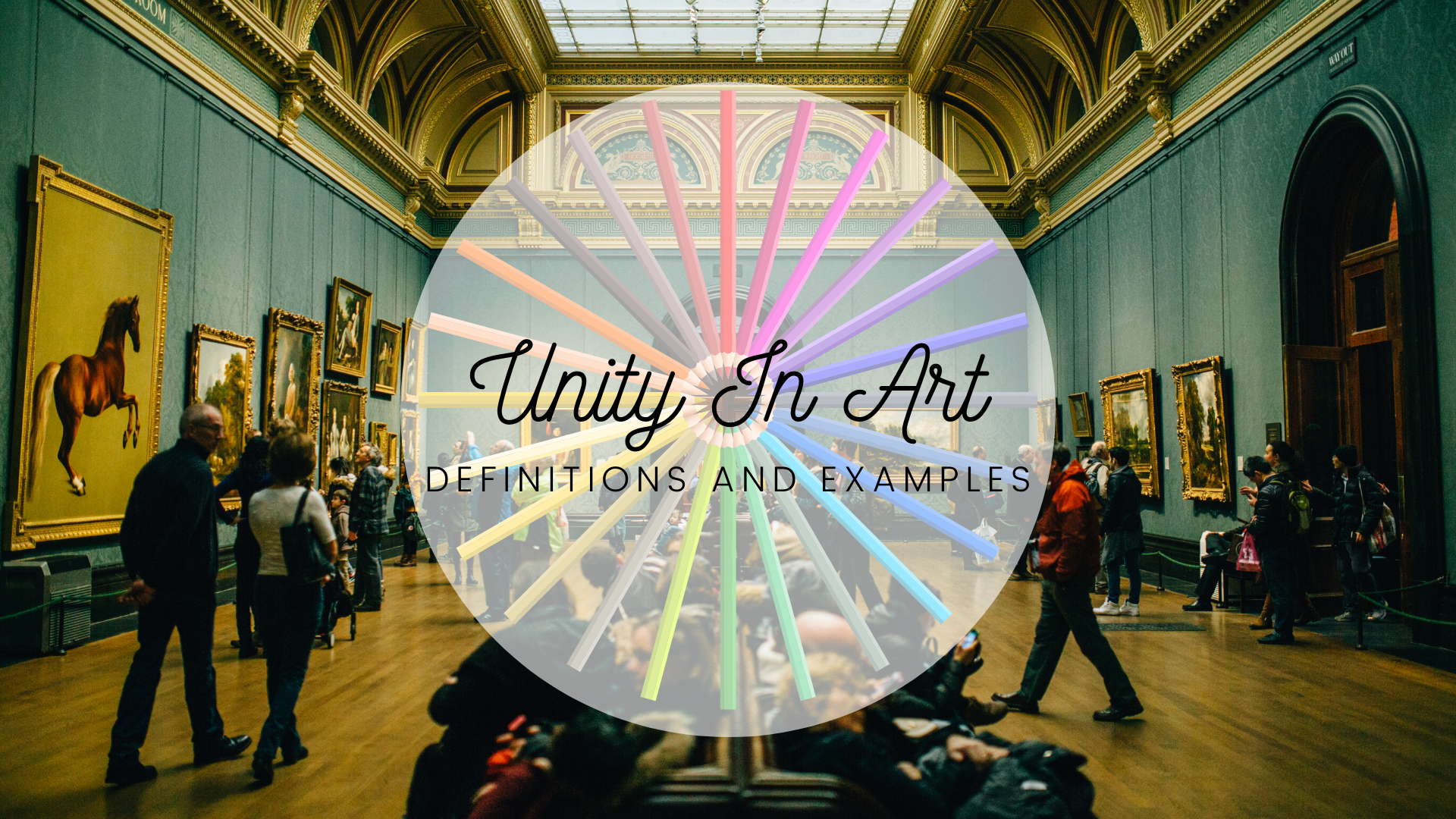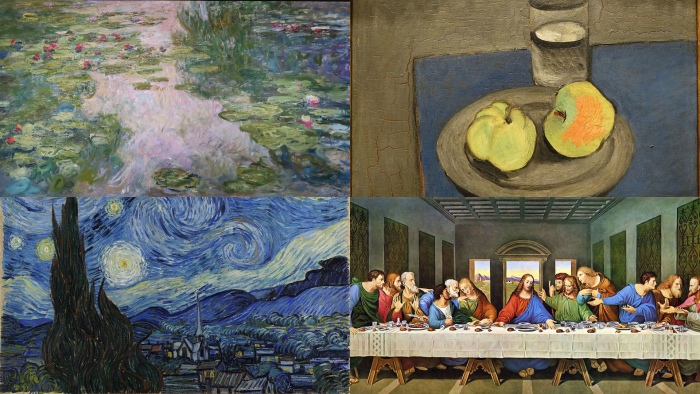
The unity definition in art is the practice of combining parts of a painting to create a unified and compositionally complete piece of art. Unity can vary depending on perspectives but in general, they are balanced, complementary, harmonious, and symbiotic.
One of the hardest artistic concepts to define is that of unity in art. Many people have heard the term at some point, but few people understand what it really means. If you want to know what it is, you have certainly come to the right place.
Unity in art is one of those concepts that is hard to define but that everyone (even people who are not necessarily artistically trained) can recognize it when they confronted with it.
What Is Unity in Art?
Like we have said, the concept is hard to define so this whole article will be an attempt at explaining its meaning in the clearest and easiest possible way.
“Where the spirit does not work with the hand, there is no art.” — Leonardo da Vinci
Having said that, let us begin by trying to offer a definition that would cover this complex concept.
The concept of unity is one of the principles of art. Unity in art is the sum of the compositional elements that make up a work of art.
Art has the following five elements:
- Line
- Shape
- Color
- Texture
- Space
Sometimes form is also thought of as one of those elements, in its case replacing shape.
All those elements need to be present in every work of art. But not just that, there needs to be balance and harmony, so they can produce a whole piece of art.
And that is what the concept of unity in art means: the balance and harmony of all the five elements.
Of course, what that actually means changes from one art piece to another. There are many possible ways to achieve unity in art and every artist must explore how he or she wants to achieve it. But there are some rules that always must be observed or, at least, they need to be known and deeply understood before they can possibly be broken.
How Do Artists Achieve Unity in Art?
Now that we have gone over the definition of this complex concept, the best way in which to understand it would be to see how artists achieve it.
To put it briefly, there is only one way to achieve unity in art and that is by using the five art elements that we saw earlier and all the other artistic principles properly. But, what does that really mean?
One useful way of thinking of unity and how artists are able to achieve it would be to think about it as the opposite of variety. Unity is often achieved through repetition and simplicity.
But that can be a bit misleading, as some artists are also able to achieve unity even in busy or expressive art, too.
“Art evokes the mystery without which the world would not exist.” — René Magritte
It all boils down to achieving a sense of order without relinquishing being exciting. Unity or order in art is not necessarily synonymous with being boring. In fact, art that achieves unity successfully is never boring.
So, how do artists achieve unity successfully? One way in which they do this is by restricting the color palette they use in any given work of art. Another way is by using patterns that would work toward harmony (remember that this is one of the crucial elements).
Texture can also work toward achieving harmony in a similar way that patterns might for some artists.
Often, artists use the same motif or objects that look similar in the background of the paintings, as a way in which to achieve unity. But there are also other ways. For example, focusing on the same brushstroke all the time, or they also use symmetry in the objects they are depicting or the shapes they are using for their compositions.
What is important to know and understand is that unity in art is never achieved in just one way. Often, artists would use a combination of strategies to achieve it.
Some artists develop their own unique style or trademark from the different ways in which they achieve unity. For example, using similar geometric shoes or limiting the color choice.
Which Artists Are Famous For Their Works’ Unity?

Clockwise from top left: “Waterlilies” by Claude Monet; “Still Life With Apples” by Henri Matisse; “The Last Supper” by Leonardo da Vinci; “Starry Night” by Vincent Van Gogh
Actually, all major artists are known for how they achieve unity. But the point of this section is to go over some very well-known examples to help you understand the concept a bit better.
The golden ratio, also known as the golden rectangle (a mathematical equation), is a compositional tool that many artists have used. Although its origins can be traced all the way back to Italian Renaissance artists such as Leonardo da Vinci, many more recent artists such as the French Georges Seurat or the Catalan Salvador Dalí are also famous for using it.
Some contemporary artists and even graphic designers still use the golden ratio as a way to arrange the different elements in the compositions. So, we find it in paintings but also in web design or posters.
But how about abstract art? No problem. Artists like Kandinsky achieved unity by using shapes, lines, and colors masterfully.
“The nightmare of materialism, which has turned the life of the universe into an evil, useless game, is not yet past; it holds the awakening soul still in its grip.” — Wassily Kandinsky
The thing about unity in art is that the results may seem simple but achieving it takes hard work, a lot of studying, and, in many cases, genius.
The French artists René Magritte used mostly repetition and a limited choice of color.
If you want to observe unity in action, as it were, the best thing that you can do is look closely at the work of those masters and others who throughout the history of art and even in this age have been able to create harmonious pieces of art.
Another way is to you may also want to check out the works of artists that reject the idea of unity and who use chaos in their art, often as a form of commenting on social issues. You will find good examples of it in the work of British artist Tracey Emin. Sometimes, there is nothing better than the lack of unity in a piece of work to understand what it really is.









